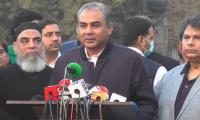The Indian military is moving in several directions at the same time. First, the Indian military is buying military hardware left, right and centre. These include import of 240 Israeli-made Rafael Advanced Defense Systems Spike medium-range (MR) anti-tank guided missiles (ATGM) and 12 launchers. Earlier, in January 2019, the Indian Defence Acquisition Council had approved procurement of 5,000 French-made second-generation MILAN ATGMs. The induction of Lockheed Martin’s C-130J Super Hercules in 2011 and Boeing C-17 Globemaster III, heavy lift helicopter Chinook and attack chopper Apache, the first indigenous submarine INS Arihant in 2016, Dhanush artillery guns, Rafale fighter aircraft, Boeing P8I (Poseidon Eight India) Long Range Maritime Patrol and anti-submarine warfare aircraft, INS Vikramaditya, a modified second-hand Kiev-class aircraft carrier, are some of the other weapon systems that India is procuring or already procured in the last 10 years.
Second, the Indian military has shown it will not depend on indigenously-manufactured weaponry, which is not up to standard. The Tejas aircraft has been a major failure besides the Arjun tank.
Many of the indigenous programmes have failed to deliver or meet the armed forces expectations. Third, the US efforts to prop up the Indian military against China are not materialising. American strategists believe that the Chinese military is modernising at a much faster pace as compared to India, which lags behind in several technologies. At the same time, the Defense Technology and Trade Initiative (DTTI), designed for technology transfers and arms sales to India, has not worked effectively.
According to the figures available, what China spent on defence in the year 2000, India could match only 66 percent of it.
In 2017, India could match only 26 percent on Chinese spending on defence. "As a percentage of overall government spending, defense allocations have fallen steadily from 17.7 percent in 2017-18, to 16.5 percent in 2018-19, to 15.5 percent in the current year. That is insufficient to cater for the military’s missions of border protection, warfighting preparations and stocking, counter-insurgency, maritime domain protection, out of area contingencies and humanitarian aid and disaster relief (HADR)," says an Indian analyst.
Fourth, the Indian military remains focused on counter insurgency operations and is heavily committed. "About one-third of the army is engaged at all times in counter-insurgency operations in Jammu and Kashmir and in the northeastern states where militancy is winding down, but is still significant.
Another one-third is deployed round the year, manning the no-war, no-peace borders with Pakistan and China, which mostly run along high-altitude Himalayan terrain. The remaining one-third of the force should be training for its warfighting role, but actually spends much of its two-year peace tenure recuperating from operational deployment or preparing for its next tenure in the field," says the former Indian Army officer.
Fifth, the Indian military remains poorly trained and demoralised. As many as 1,113 cases of suspected suicides took place in the armed forces from 2010 to 2019, according to data provided by the Indian government recently. Of the total 1,113 cases, 891 took place in the army, 182 in the air force and 40 in the navy, as per the data shared by Minister of State for Defence Shripad Naik in reply to a question in Lok Sabha.
Sixth, the Indian military instead of making actual gains looks towards propaganda and rhetoric. For example, it cannot win a two-front war but speaks about it only to get more resources from the government. It never downed a Pakistani F-16 in 2019 conflict but went all out to claim it. The Balakot attack was an absolute failure according to international experts but the Indian military claims it to be a success. There was no surgical operation in Pakistan in 2016 but only in the minds of Indian armed forces personnel. The Pulwama bombing was a Raw operation but was blamed on Pakistan.
As it is, according to neutral experts, the Indian armed forces are not going places in near future.
Due to breakdown, power was cut off in Mall Road, Jhikagali, Bhurban, Expressway and other areas
Demonstrators criticise introduction of a token system at the Kuntani border
He says bunkers would be demolished and weapons collected to restore peace to the area
Special Judge Central Shahrukh Arjumand conducts hearing at Adiala Jail on Friday
PN flotilla was led by Commander 14th Destroyer Squadron, Commodore Muhammad Umair
ATC Special Judge Amjad Ali Shah approves her bail until January 13







